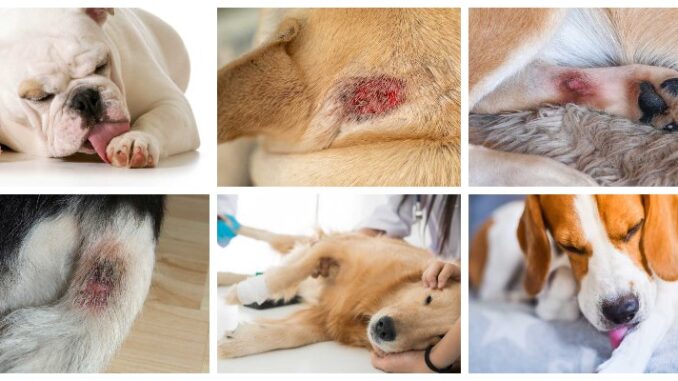
This article was updated on October 19th, 2023
Ouch! Is your dog experiencing hot spot pain? Hot spots are one of the most common skin conditions in dogs, it is important to know how to recognize and treat these nasty sores.
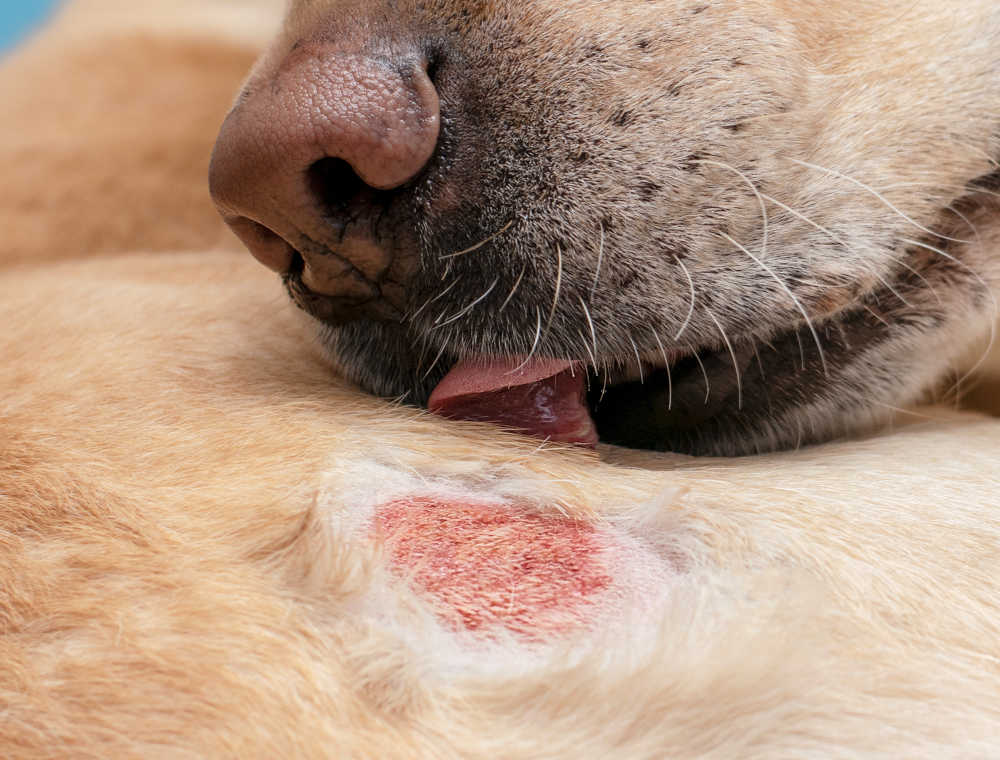
Hot spots, technically known as acute moist dermatitis, are red, inflamed areas of skin that can seem to appear overnight. In this article, we will review pictures and discuss home remedies and treatment options.
What Do Hot Spots Look Like on Dogs? (7 Pictures)
A hot spot is essentially an area of a dog’s skin that has become inflamed and/or has a bacterial infection. The skin is macerated, red, irritated, and moist with purulent (pus) oozing on the surface. The affected skin is friable and easily bleeds. Often there is matted fur covering and hiding the hot spot. Picture a raw and wet scab, as showcased below:
Below are pictures of hot spots on a dog’s tail and leg:
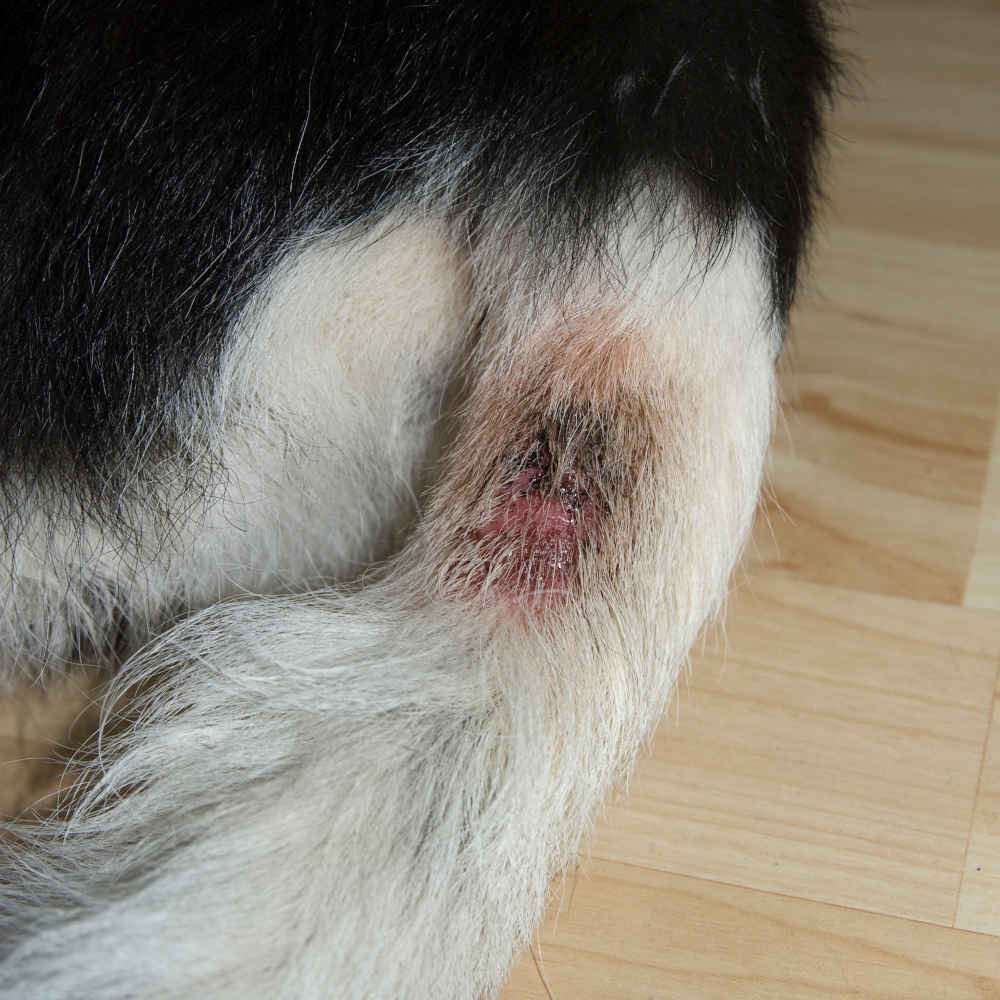
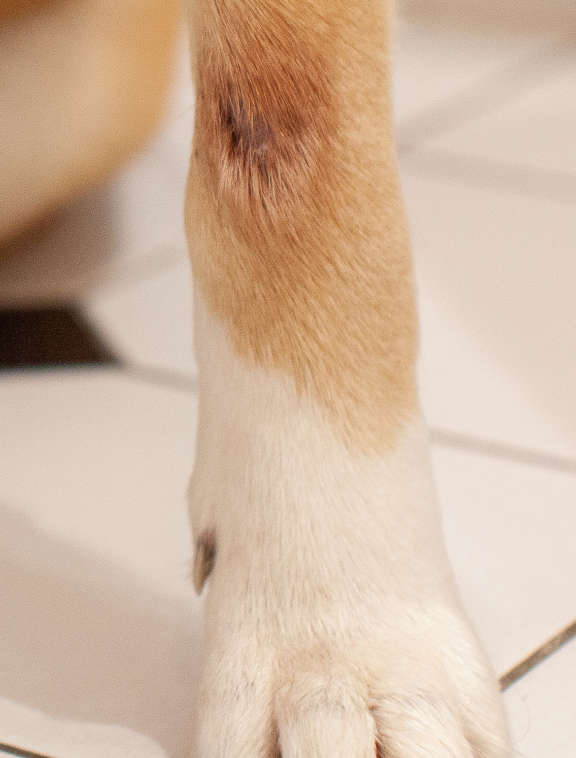
“Hot spots are more likely to occur in the summer months. They cause biting, itching, and scratching and require immediate attention to prevent them from a) getting worse and b) spreading.”
Close-up Pictures
As you can see in the pictures below, hot spots are often:
- red
- inflamed
- with a moist appearance
They also often seem to appear overnight. Let’s take a closer look:
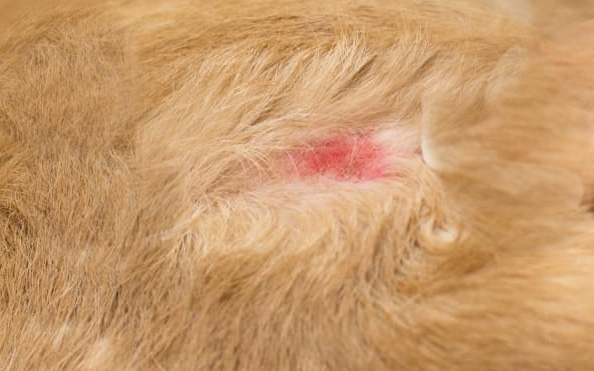
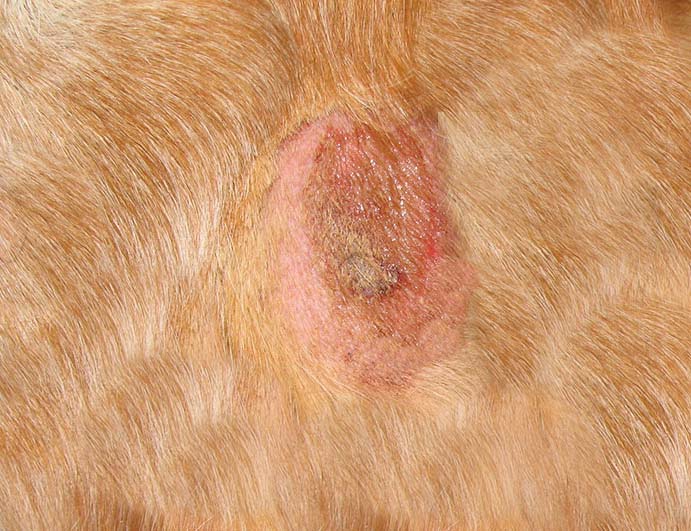
Frequent Locations
Seeing an oozing sore on your dog’s face, head, limbs, or belly can be deeply unsettling. And chances are, you will smell it too. Hot spots may occur anywhere on a dog but are most common:
- behind and under the ear,
- on the legs, and
- on the hips.
Behind a dog’s ear:
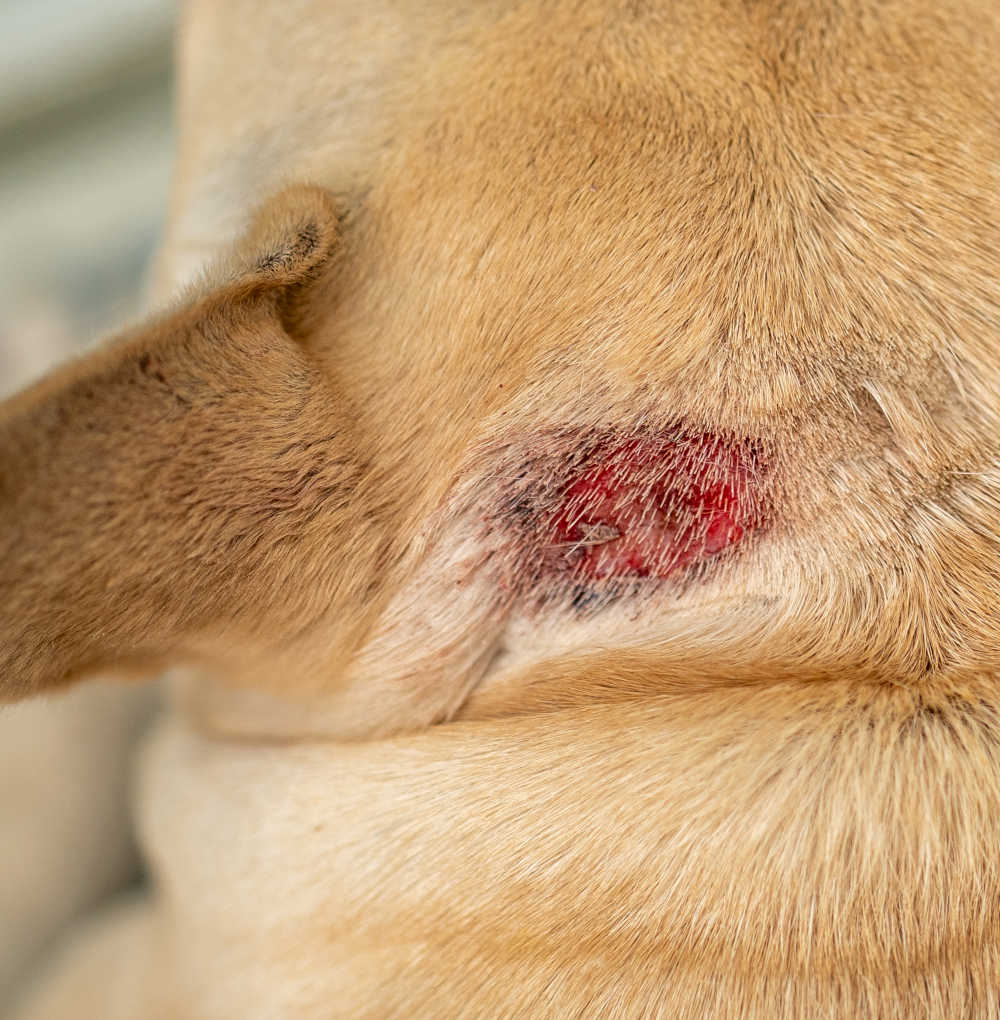
On a dog’s leg (the dog licked it until it’s red and bleeding):
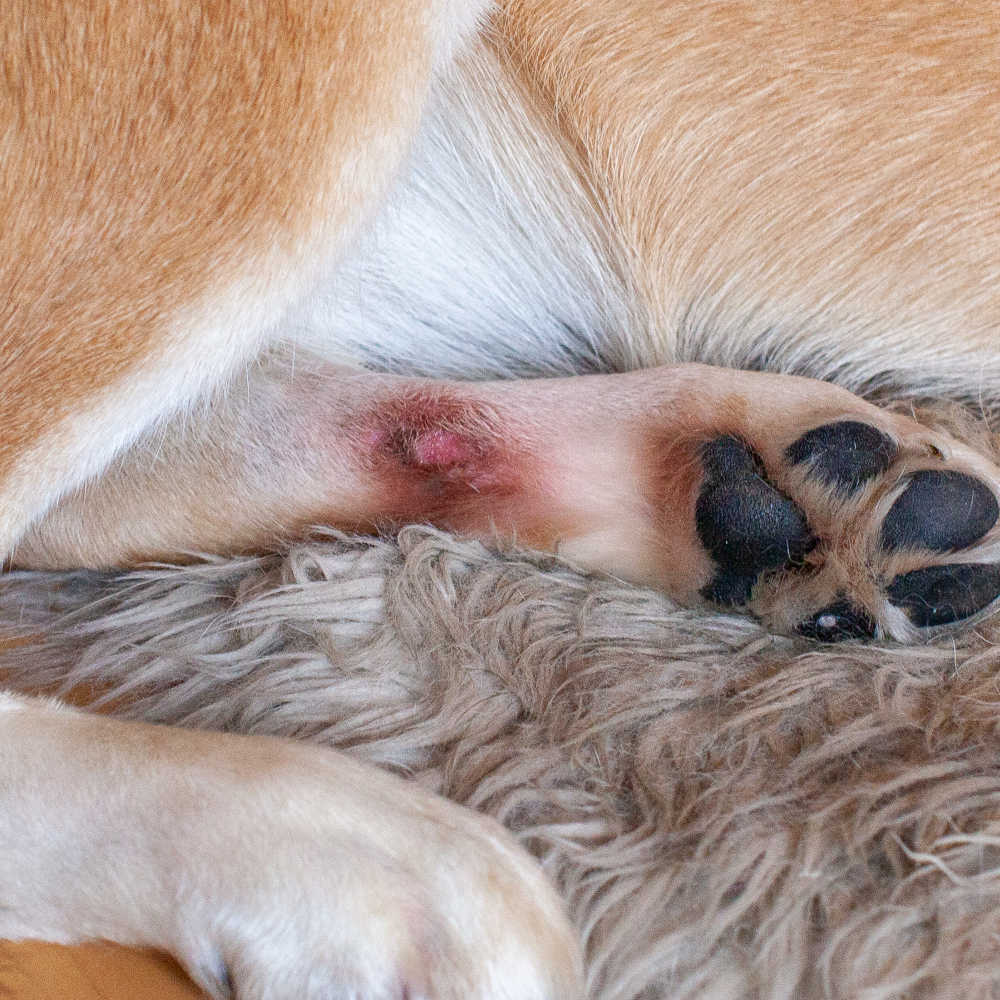
What You Can Do at Home to Help
“For most dogs, hot spots will pop up again and again throughout their lives. If your dog happens to be one of these unfortunate pups, treating these sore spots at home will be not only convenient but also less expensive. Mild hot spots can often be successfully treated at home.”
After an initial diagnosis, Cornell University’s College of Veterinary Medicine points out that oftentimes, mild hot spots can be treated at home; many clear up in 3–7 days.
However, keep in mind that addressing the underlying cause is paramount, or the hot spot will return. Infections can also range from mild to severe. Therefore, getting advice from your vet first is always recommended.
1. Anti-inflammatory sprays
One of the best at-home treatments is an anti-inflammatory spray such as the Vetricyn Spray or PetMD Hydrocortisone Spray, featured below. Both of these sprays include potent anti-inflammatories to decrease the itch and soothe the angry skin to break the cycle of your dog’s scratching:
- DOG HOT SPOT CARE: Spray a few times daily to relieve irritated skin that cause excessive scratching, chewing, and licking.
- Hydrocortisone Spray For Dogs, Cats, And Horses
2. Keeping the wound dry and clean
Above all, a hot spot needs to stay:
1. Dry
2. Clean
This means NO licking! As annoying as your dog may find it, a plastic cone will likely have to be worn, at least until the hot spot begins to heal.
Other ways you can help your dog at home is to clip the hair from around the area to allow the wound to dry.
You can also wash the area with a mild soap and rinse thoroughly. Applying aloe vera or vitamin E lotions can also provide some relief, just make sure your pup doesn’t lick them off before they get a chance to absorb.
Remember to be gentle: hot spots are painful.
Veterinary treatments
Shaving a border of hair from around the lesion is sometimes helpful for healing. Antibiotics and anti-inflammatories can be used to treat any potential infection (if present) and remove the itch. These may be applied topically or orally.
The most important part of treatment is addressing the underlying cause, as the dog will get more hot spots if this cause is not addressed. Causes are varied and include fleas, allergies, and other infections, such as ear infections. Almost anything that causes a dog to scratch can result in a hot spot. Costs of treatment will depend on the underlying cause but average between $150-$500.
Are Hot Spots Painful?
“Yes, hot spots can make your dog’s life absolutely miserable. However, they are relatively benign and will not put your dog’s life at risk. Dogs successfully recover from them all the time. It just takes the right treatment.”
What Causes Hot Spots?
Hot spots are caused by retained moisture in the hair or an irritant against the skin. Common scenarios include recent swimming or bathing with inadequate drying of the hair coat.
If your dog comes down with a case of hot spots, don’t feel bad. It’s not necessarily a sign you failed to keep them healthy. Hot spots can also occur for all sorts of reasons, including the following:
- Allergies
- Fleas
- Minor skin scraps and cuts
- Stress / Anxiety / Boredom / Fear
- Trapped moisture (like after swimming or bath time)
- Dirty coat
- Anal sac disease
Initially, your dog feels “off” somewhere on their body. Maybe it is due to an underlying cause or maybe because they picked up parasites somewhere, got a scratch while running in the woods, roughhousing with the neighbors’ pooches, etc. Later, they lick and chew on the spot. This makes it moist and inflamed and…uh oh! Unfortunately, a bacterial infection is born.
5 Suggestions to Prevent Hot Spots
Hot spots can be a chronic issue, something that will pop up again and again throughout your dog’s life. It’s important to know how these prevent these sores. As with most canine medical conditions, curing a hot spot is more difficult than preventing one. Ideally, we want to avoid hot spots in the first place.
Here are five easy steps to follow:
1. Practice good doggy hygiene.
Does your pooch love to roll around in the mud? Tangled hair? Is dirt trapped in the coat? Implement a strict bath time and grooming routine to minimize skin irritants.
2. Avoid products that trigger allergies.
Did you know – a whopping 20% of all dogs will have allergies over their lifetime? Dogs who are allergic to foods (such as dairy, wheat, beef, egg, etc.) can feel very itchy indeed. Read the label and don’t buy foods or treats that trigger a scratchy allergic reaction.
3. Say goodbye to boredom.
Some dogs lick nonstop because they are bored. Just like how we humans bite our fingernails or tap our feet, dogs lick. Lack of mental stimulation can result in wet, raw, exposed skin that turns into…yes, you guess it…a hot spot. Exercise, games, training, puzzles, and toys can all help with dog boredom.
4. Feed supplementary fatty acids.
Fish oil is a powerful anti-inflammatory. It’s full of Omega-3 fatty acids. Building a strong skin barrier is key to preventing hot spots, and daily vitamins with fish oil could work wonders.
- Itch & Allergy Relief with Omega-3 for Dogs - with 500mg of Omega (EPA+DHA) per serving, our chewable supplement helps with hot spots, dry itchy skin, ease itching, irritated skin, stops shedding.
5. Consider Flea and Tick Medication.
Lastly, if your dog is forever bringing home fleas and ticks from the dog park, campground, boarding facility, and so on, ask your vet about preventative medication. Those itchy little fleas can go live somewhere else!
Important: not all red round lesions are hot spots, and it is important to obtain a proper diagnosis to determine the correct treatment. In the following section, we will discuss conditions that may look like hot spots but are not, and therefore require different treatments.
Conditions That Look Like Hot Spots… But Are Not
1. Ringworm: ringworm also appears as red, inflamed patches on a dog’s skin. However, ringworm, a fungal infection, typically presents as circular, scaly lesions with hair loss. Hot spots, on the other hand, are localized, moist, bacterial infections, often appearing suddenly and causing intense itching. Ringworm is typically treated with antifungals, while hot spots are treated with antibiotics and anti-inflammatories.
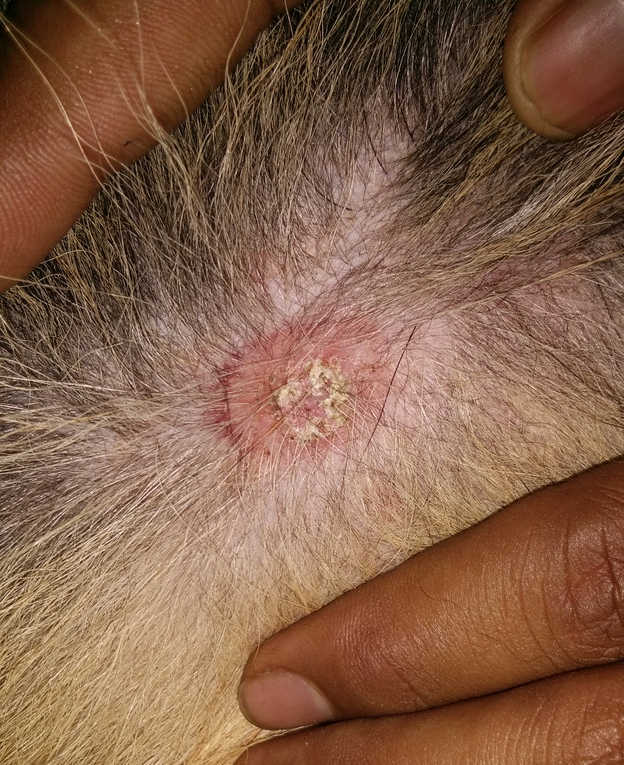
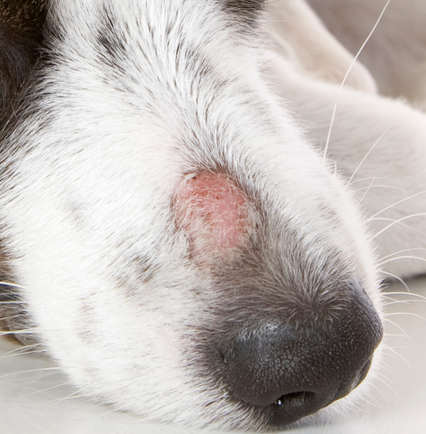
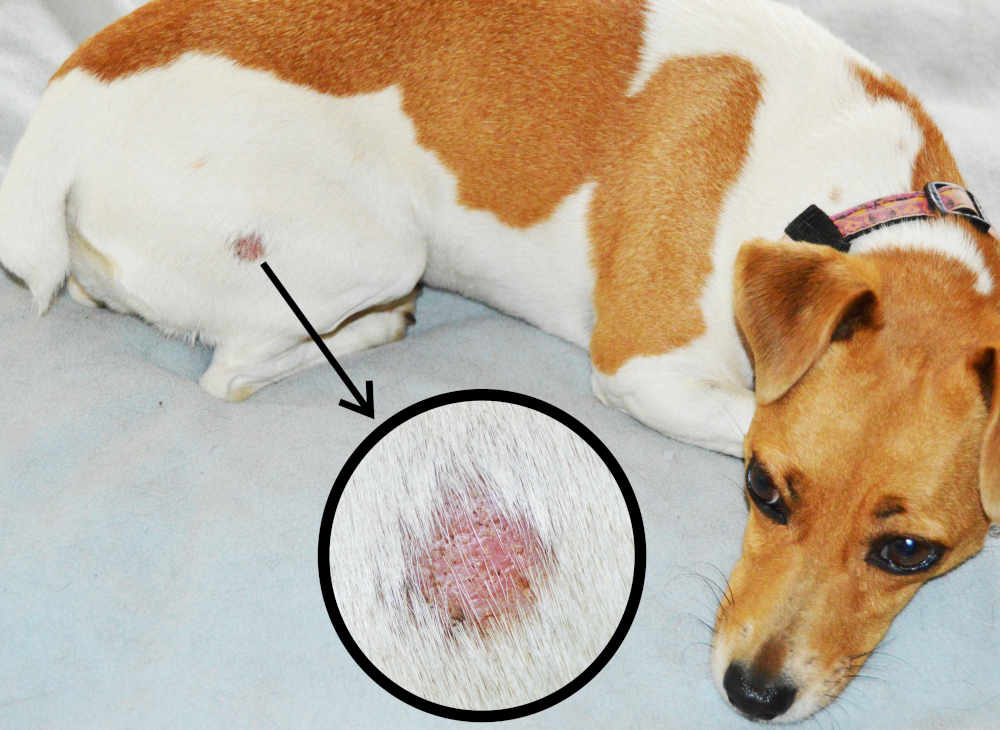
2. Skin infections: Broader, more generalized skin infections, insect bites, and scrapes can all appear similar to a hot spot. All of these conditions cause reddened skin, irritation, and itchiness (as shown on the pictures below). Correct diagnosis is essential for effective treatment of any skin condition.
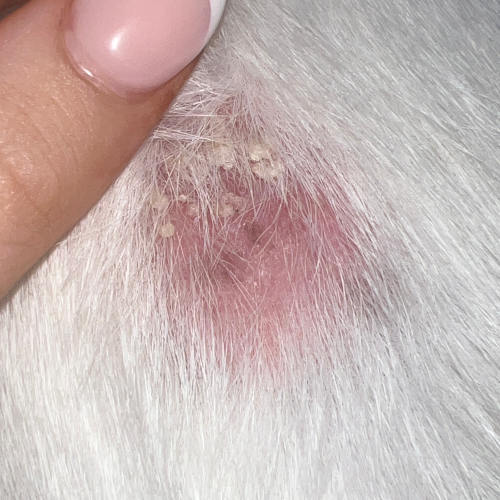
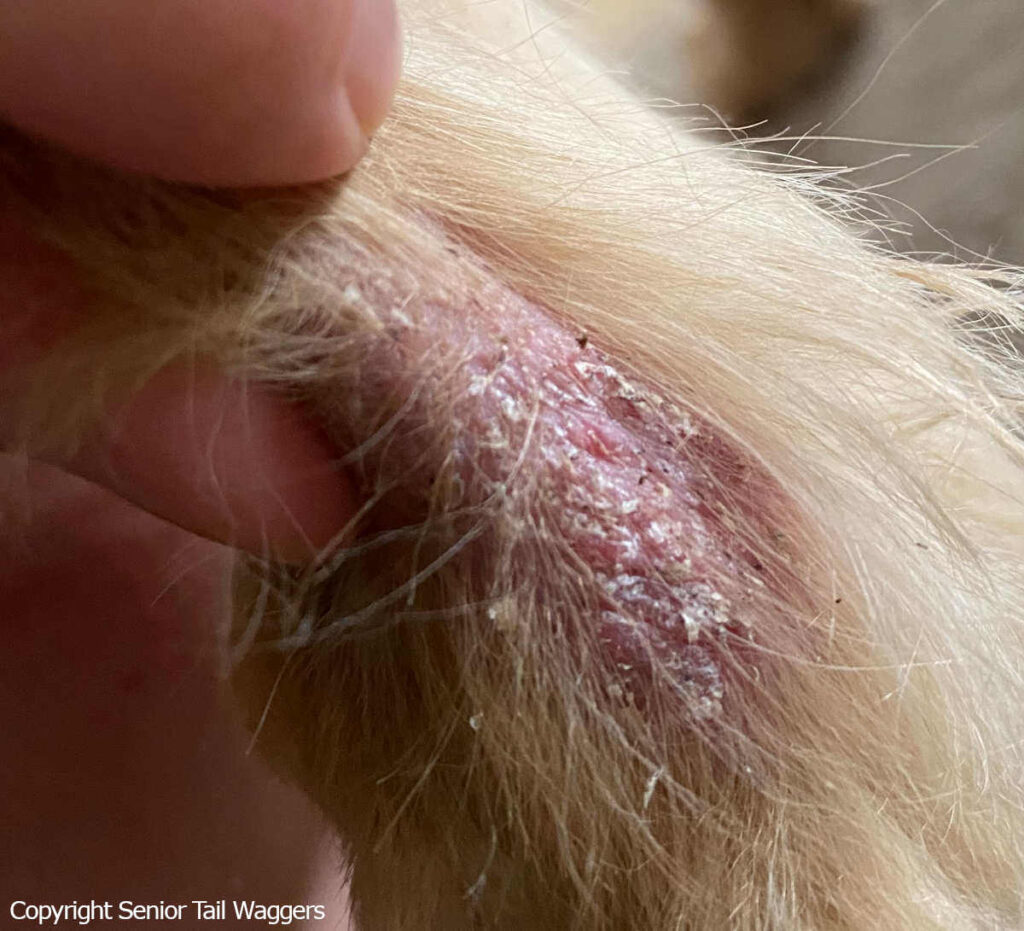
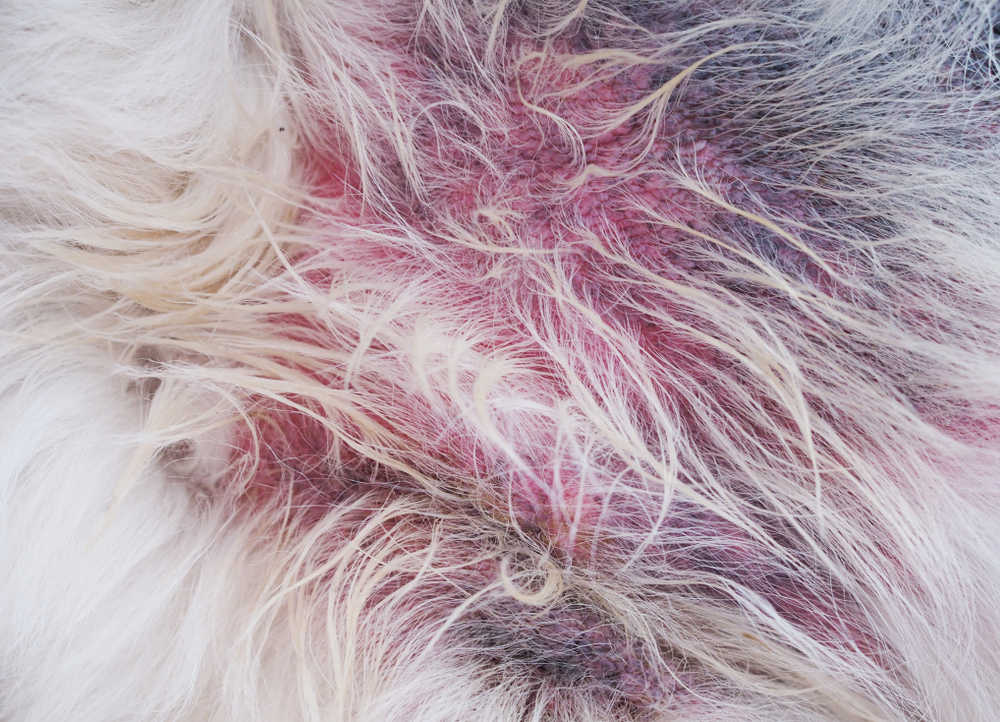
View: Pictures of common dog skin problems.
Disclaimer: This website's content is not a substitute for veterinary care. Always consult with your veterinarian for healthcare decisions. Read More.







Can hot spots go down the entire side of a dog? The vet put her on anti itch and antibiotics, but more spots keep coming. They are grayish blackish in color. Please if someone can tell me what I am missing I would appreciate it. No fleas or mites or other. or ring worm on special food, no treats, and distilled water.
Hi there and thanks for this new question.
Typically a ‘hot spot’ (or localised area of acute moist dermatitis) is localised to one area, and no bigger than 10cm or so.
If your dog has multiple lesions or larger lesions, this is more likely something else, such as a pyoderma / general skin infection.
You mention your dog is on special food? So presumably has allergies. Many dogs with allergies have widespread skin issues which can include redness and itchiness. Oftentimes there are secondary yeast infections, causing the skin to darken and thicken.
“The information on this website is not a substitute for in-person veterinary care. Always seek advice from your veterinarian if you have concerns about your pet’s medical condition.”
By the time I noticed a spot on my dog it is about the size of a nickel and is dark gray flaky in color. By scratch the black color off it comes off easily and is very red underneath and the hair comes out right with it. Vet thinks hot spots but I swear it’s something else. They kind of smell a little yeasty also.
Hi there.
A hot spot tends to come up quickly and is bright red, hot and oozing. They generally cause the dog discomfort. Once treated, they should resolve within 1-2 weeks. It would not be unusual for there to be a secondary yeast infection.
If your vet has provided treatment for a hot spot but signs have not improved, we’d need to take a look at things again, in case there is something more going on.
“The information on this website is not a substitute for in-person veterinary care. Always seek advice from your veterinarian if you have concerns about your pet’s medical condition.”